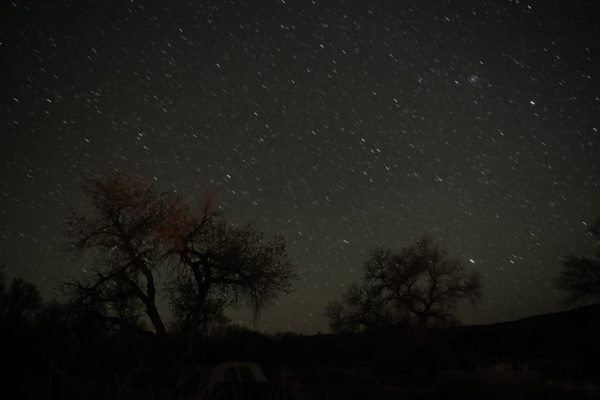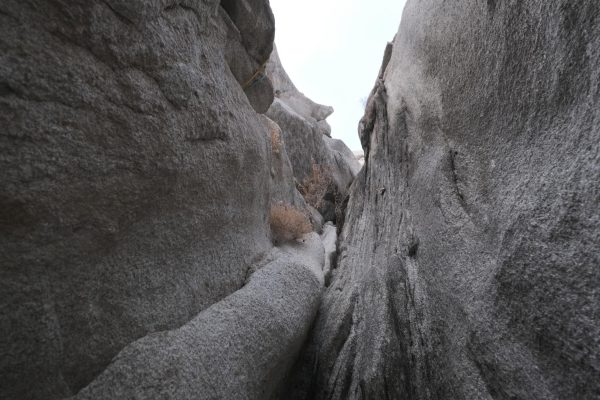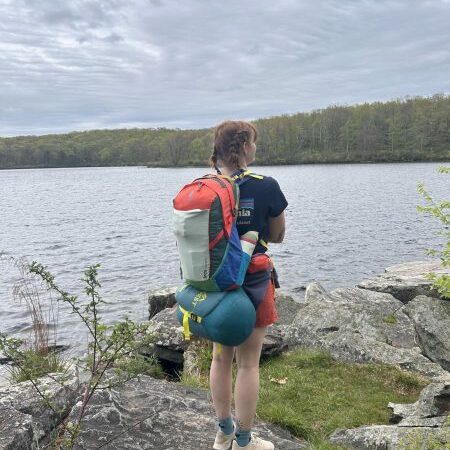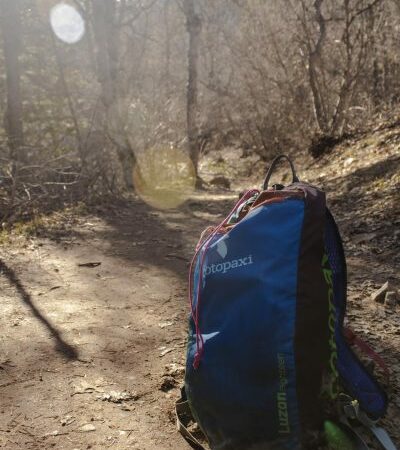Outdoor Research at the U: Calling all Cavers
Never go caving alone. If you are interested in joining the caving community in Utah, check out a local grotto of the National Speleological Society.
A thousand years ago, it might have been snowing just like now. A thousand years ago, a young elk might have been prancing through the snow, leaving hoofprints behind as it followed its mother. Neither could have known–nor comprehended–that the snow concealed a deep, gaping vertical cave shaft large enough to trap the young elk. The compact snow would offer no support to the budding bull’s weight.
The elk’s story, however, doesn’t end there. Its bones were preserved in ice and dirt in a cave in Logan Canyon, undisturbed until recreational cavers took a couple of University of Utah researchers into the cave. The elk’s remains were brought back to light, preserved at the Natural History Museum of Utah (NHMU), and became part of a growing research endeavor: the Utah Caves Project.
The Utah Caves Project
In 2018, Eric Richards–a local caver whose ideal Saturday is spent underground–emailed Dr. Randy Irmis at the Natural History Museum of Utah, who immediately forwarded the email to fellow paleontologist Dr. Tyler Faith. The email was short and straightforward: Richards had found animal bones in several caves and asked if the museum would be interested.
And interested, they were.
Cave systems are unique environments and ideal for preserving animal bones. As closed systems, caves have few resident species and stable conditions that prevent the destruction of remains by scavengers or the elements. Unlike the Earth’s surface, where animal bones can get sun-bleached, crushed, or moved, bones that end up in caves remain relatively undisturbed. The bones get buried in the cave dirt and stay there for thousands to millions of years.
These cave deposits are like gold mines for researchers interested in past environments, such as Dr. Irmis. For example, the American pika–a small rabbit-like species–can not survive temperatures above 70 degrees Fahrenheit. If researchers find an ancient pika skeleton in an area that nowadays averages 80 degrees Fahrenheit, they can infer that the climate was colder when the pika died.
So, when Eric Richards wanted to learn more about the bones he was seeing and reached out to Irmis and Faith, the Utah Caves Project was born. This project seeks to analyze animal remains from Utah’s caves to explore biodiversity trends, animal adaptations, and community engagement with the research. It blends academia and citizen science, bringing together researchers and Earth’s last great explorers.
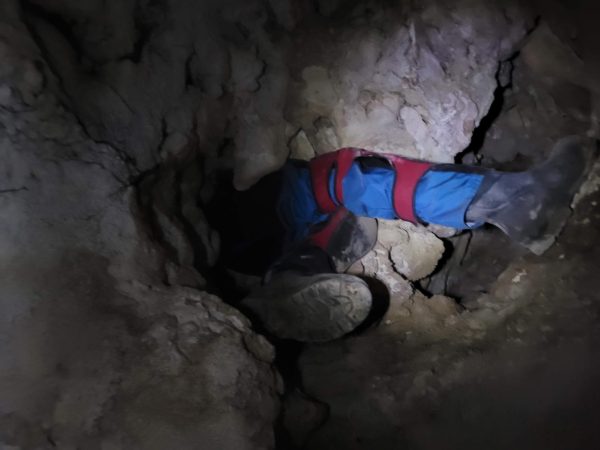
The Cavers
Often overlooked, caving offers a vast frontier for discovery. Across mountains and hills, any little hole could lead to an elaborate cave system. As Richards explained in our interview, caves are still being discovered across Utah. Anytime cavers venture into the dark there’s a chance to find a new cavern: new corners of the Earth to venture inside. Unlike the surface, which humans have well-mapped, dynamic cave systems offer a kind of final frontier.
Eric Richards fell into the caving community out of (as he put it frankly) boredom. He wanted something new, and after some Planet Earth episodes and internet searches, he joined a local caving club, called a grotto. Now Richards and his wife, Fumiko, are active National Speleological Society (NSS) members. The NSS combines caving with conservation and research, bringing recreational cavers together and providing opportunities for those who want to get their foot in the door.
While exploring caves, Richards often hoped to discover bones from an unknown species. That deep in the unexplored Earth it is certainly a possibility. His curiosity about the remains he encountered in caves led Richards to contact Dr. Irmis, who leveraged Richards’ caving expertise to help launch the project.
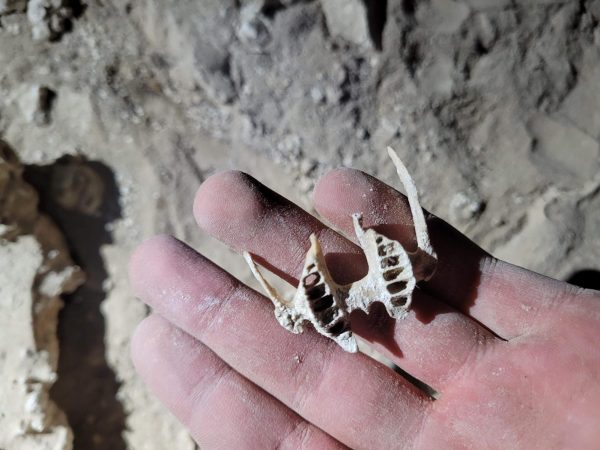
The Researchers
After Richards’ initial contact, Dr. Randy Irmis immediately involved Dr. Tyler Faith, the NHMU’s Chief Curator, whose research focuses on African fossil animal remains. Dr. Faith is interested in how these animal remains illustrate relationships between climate change, human behavior and evolution, and terrestrial ecosystems through time. His specialty in mammal ecology and evolution, and Dr. Irmis’s knowledge of Utah’s fossil record made them ideal collaborators. Not to mention, they both loved having an excuse to learn how to cave.
The project also brought in Dr. Kasey Cole, a University of Utah researcher focused on ancient American mammalian communities. As a Postdoctoral fellow for the Science Research Initiative (SRI), Dr. Cole has been able to bring in undergraduate students in a laboratory setting. Other experts, including NHMU mammologists Eric Rickart and Katrina Derieg, and wildlife biologist Dr. Austin Green, joined the project, contributing their knowledge of modern mammal species to compare with prehistoric remains.
The Utah Caves Project has been an exciting opportunity for collaboration across disciplines. Though not a typical image of a scientist in goggles and a white coat, this project has become a real scientific adventure and built a little community.
In our interview, Dr. Faith explained how he had gotten into field-based research as an undergraduate student. As he talked about the professor who had inspired him and the outdoorsy trips he had been on, I could feel his passion for the work. He had an excitement for nature and science, that I also felt from Eric Richards. Dr. Irmis echoed similar sentiments. “It’s always a great experience,” he said, “when you know you are making new observations, or you know people are finding new fossils because you are the first ever to see those specimens.”
The people involved in the Utah Caves Project all have an air of adventure about them and a desire to keep discovering.
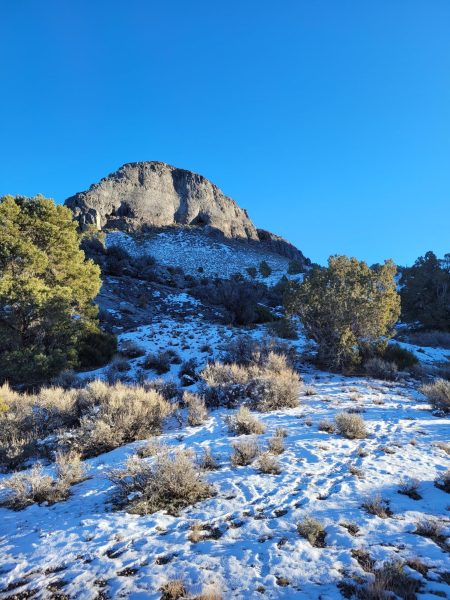
Going Back for More
With new caves constantly being discovered in Utah, there’s no shortage of data for the Utah Caves Project to collect. Students and volunteers can participate in fieldwork and laboratory analysis, contributing to the ongoing exploration of Utah’s caves. While only professionally trained individuals can explore the vertical caves, SRI students joined fieldwork over fall break and got to enter more easily accessible cave systems.
Whether caving, hiking, camping, or even kayaking, there are always opportunities to answer questions about the environment and our place within it. Fumiko Richards advised in our interview, that those interested in science and outdoor recreation should “if they see something, [should] say something.” While outdoors, if something catches your eye that you think might lead to interesting questions, undoubtedly, there is a scientist who would want to answer those questions and who would love to get their hands a little dirty.
Caving, though fun, can be very dangerous. Never go caving alone. If you are interested, get proper training from a qualified individual. If you are interested in Utah’s caving community, visit the National Speleological Society’s website at https://caves.org/. They have information on training, conservation, research, and the local caving Grottos.
If you are interested in learning more about, or joining, the Utah Caves Project you can reach out to Dr. Tyler Faith or Dr. Randy Irmis. Their contact information can be found at https://nhmu.utah.edu/about/staff.
The post Outdoor Research at the U: Calling all Cavers appeared first on Wasatch Magazine.
Source: https://wasatchmag.com/outdoor-research-at-the-u-calling-all-cavers/


